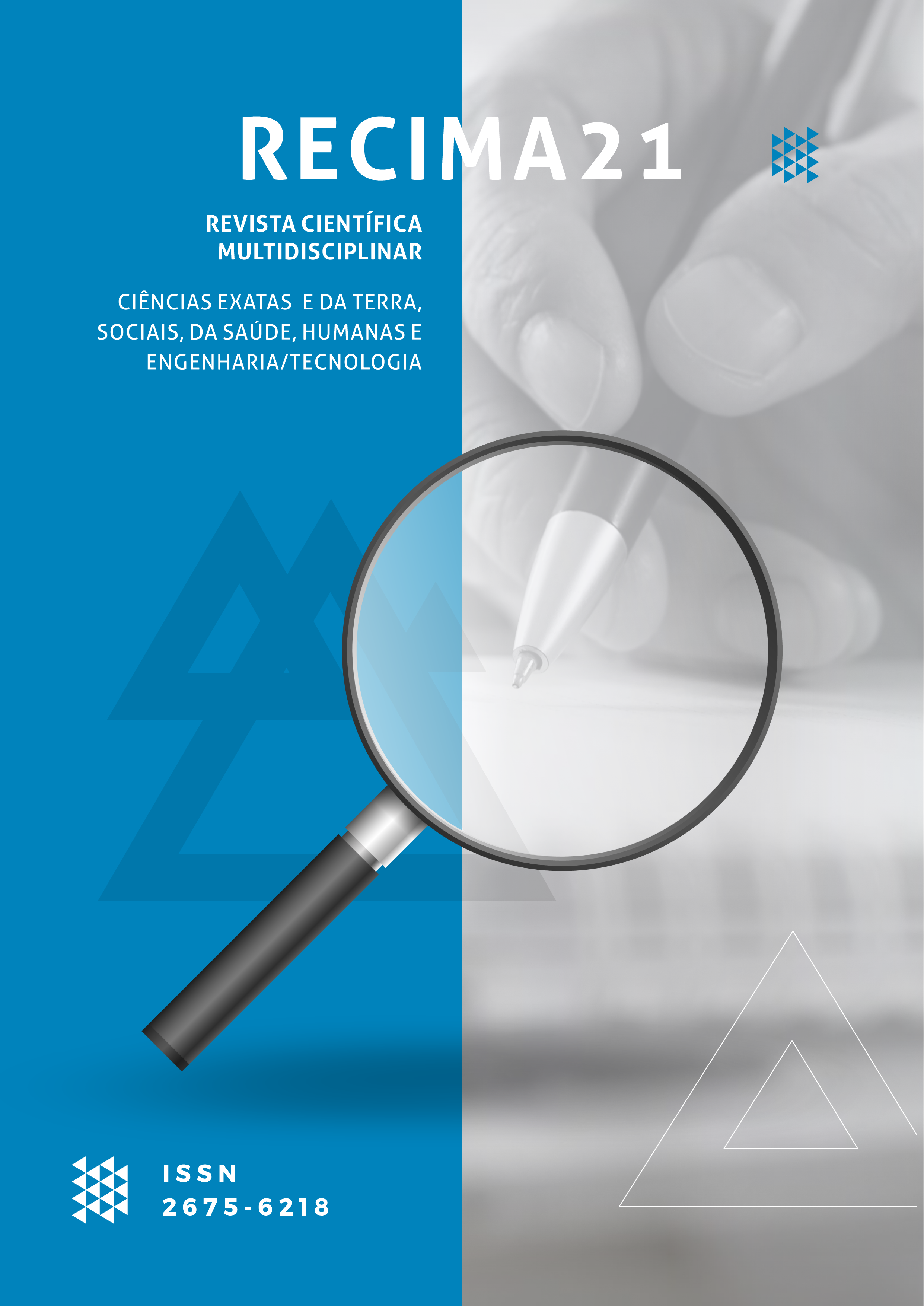DIAGNOSIS OF STAPHYLOCOCCUS SPP: A RETROSPECTIVE ANALYSIS OF LABORATORY DATA
DOI:
https://doi.org/10.47820/recima21.v3i7.1729Keywords:
work aims to report the Isolation and identification of StaphylococcusAbstract
The present work aims to report the Isolation and identification of Staphylococcus, from samples of exudates and urine in humans, through analyzes carried out from 2017 to 2021 by the bacteriology section of the Central Laboratory of the Institute of Veterinary Research in Huambo . For this, all records from the period between January 2017 and December 2021 were verified, and the results of positive diagnoses and negatives were counted and stored in an Excel sheet for processing. The results of the survey of data on the isolation and identification of Staphylococcus spp. revealed that of the 486 samples of exudates and urine analyzed, 20% (98/486) were considered positive and 80% (388/486) negative for Staphylococcus spp., 34% (33/98) were isolated from urine samples and 66 % (65/98) of exudates. The frequency of isolation of Staphylococcus spp. from samples of exudates and urine from patients from hospitals and clinics in the municipality of Huambo, revealed evidence that Staphylococcus ssp are the cause of various infections.
Downloads
References
ANGÉLICA S T, UILDEMARA LOP, PATRÍCIA O K. Isolamento e identificação de staphylococcus aureus a partir de nasofaringe de profissionais de saúde: uma revisão de literatura. Tema em Saúde.2017; 17 (2): 2447-2131.
ASSIS et al. A incidência de infecções no trato urinário: uma análise documental de prontuários. Rev. Bra. Edu. Saúde, v. 8, n.4, p. 58-64, 2019 Disponivel em https://www.gvaa.com.br/revista/index.php/REBES/article/view/6115.
BANIA J. et al. The profiles of enterotoxin genes in Staphylococcus aureus from nasal carrieres. Letters in Applied Microbiology, Oxford. 2006; 42 : 315-320.
BERNADO WLC. et al. Staphylococcus aureus ampicillin-resistant from theodontological clinic environment. Revista do Instituto de Medicina Tropical de São Paulo, São Paulo. 2005; 47: 19-24.
BISHARA J. et al. Five-year prospective study of bacteraemic urinary tract infection in a single institution. Eur J Clin Microbiol Infect Dis . 1997; 16: 563-7.
GELATTI LC. et al. Sepse por Staphylococus aureus resistente à meticilina adquirida na comunidade no sul do Brasil. Rev. Soc. Bras. Med. Trop., Uberaba. 2009 ; 42 (4 ).
GOUD R. et al. Community prevalence of methicillin andvancomycin resistant Staphylococcus aureus in and around Bangalore, southern India. Rev SocBras Med Trop. , 2011; 44 (3): 309-12.
GUPTA K, Hooton TM, Stamm WE. Increasing antimicrobial resistance and the management of uncomplicated community-acquired urinary tract infections. Ann Intern Med. 2001; 135:41-50.
HEILBERG, I P, SCHOR N. Abordagem diagnóstica e terapêutica na infecção do trato Úrinário - ITU. Rev Assoc Med Bras, São Paulo 2003; 1( 49): 109-116.
KONEMAN E. et al. Diagnóstico microbiológico. 5 ed. Rio de Janeiro: Guanabara Koogan. 2002 ; 11: 1.
KONEMAN E. et al. Diagnóstico Microbiológico. 6ª ed. Rio de Janeiro: EditoraGuanabara Koogan. 2008 : 637-643.
LOPES HV.et al. Diagnóstico das infecções do trato urinário. Rev Assoc Med Bras, São Paulo. 2005; 6 (51) : 301-312.
MOURA JP. et al. Resistência à mupirocina entre isolados de Staphylococcus aureus de profissionais de enfermagem. Acta paul. enferm., São Paulo.2010 ; 23 (3).
MURNI IK, DUKE T, KINNEY S, DALEY AJ, SOENARTO Y. Reducing hospitalacquired infections and improving the rational use of antibiotics in a developing country: an effectiveness study. Arch Dis. 2015 ; 100 : 454-459
RABELO MA. et al. Phenotypic methods fordetermination of methicillin resistance in Staphylococcus spp. from health care workers. BrazJ Pathol Lab Med. 2013; 49 (2): 91-96,
RAZERA F. et al . CA-MRSA em furunculose: relato de caso do sul do Brasil. An. Bras. Dermatol., Rio de Janeiro. 2009; 84( 5).
ROBBINS SL, Rim IN, Robbins SL. Patologia Estrutural e Funcional; 6ª ed. Editora Guanabara Koogan S.A. Rio de Janeiro-RJ. 2000; 834-892,
SANTOS AL, et al. Staphylococcus aureus: visitando uma cepa de importancia hospitalar • J Bras Patol Med Lab. v. 43, n.6, p. 413-423 , 2007.
SCHOLES D. et al. Risk Factors for Recurrent Urinary Tract Infection in Yong Women. JID. . 2000 ; 182: 1177-1182
STAMM WE, NORRBY R. Urinary Tract Infections: Disease Panorama and Challenges. JID.2001; 183 (1): 1 - 4.
TRABULSI L. R. et al. Microbiologia. 3. ed., São Paulo: Ed. Atheneu. 2002.
Downloads
Published
How to Cite
Issue
Section
Categories
License
Copyright (c) 2022 RECIMA21 - Revista Científica Multidisciplinar - ISSN 2675-6218

This work is licensed under a Creative Commons Attribution 4.0 International License.
Os direitos autorais dos artigos/resenhas/TCCs publicados pertecem à revista RECIMA21, e seguem o padrão Creative Commons (CC BY 4.0), permitindo a cópia ou reprodução, desde que cite a fonte e respeite os direitos dos autores e contenham menção aos mesmos nos créditos. Toda e qualquer obra publicada na revista, seu conteúdo é de responsabilidade dos autores, cabendo a RECIMA21 apenas ser o veículo de divulgação, seguindo os padrões nacionais e internacionais de publicação.













